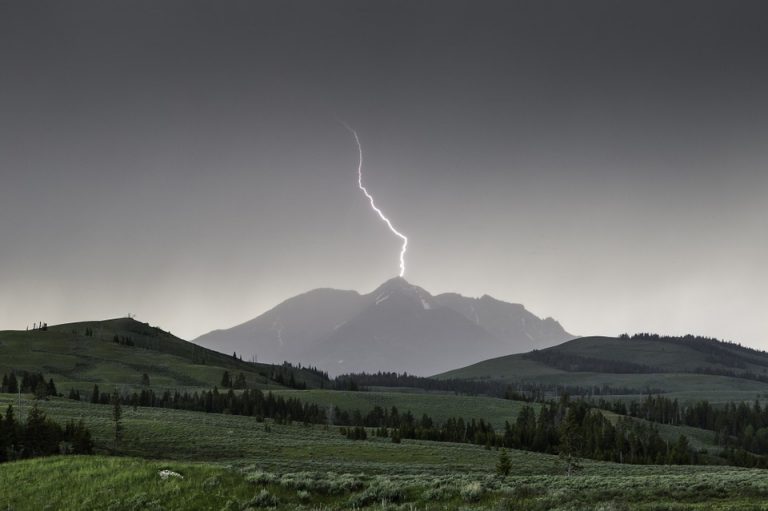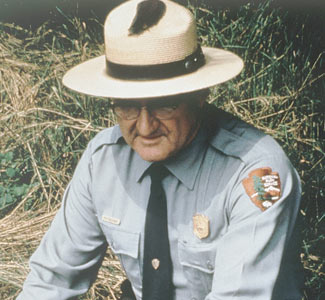Roy Sullivan, Human Lightning Rod

The average U.S. resident faces about a 1 in 280,000 chance of being struck by lightning any particular year. For a lifetime, it’s 1 in 3,000. The odds against being struck multiple times increase exponentially with each strike, even if you ignore the fact that many people don’t survive their first strike to risk their second, or third, and so on. Of course, the odds of getting struck dramatically improve the more time you spend outdoors.
What are the odds of being struck by lightning seven times? About 1 in 2.187^24, or roughly equivalent to winning the lottery 8,000,000,000,000,000 times, which might sound greedy if it were comprehensible at all.
Between 1942 and 1977, a Virginia national park ranger named Roy “Sparky” Sullivan hit this jackpot of all jackpots. Six of his lightning strike incidents in fact occurred between 1969 and 1977, threatening to become a yearly tradition. In a world full of hype and unverified tall tales, Sullivan’s accounts were all confirmed by the testimony of the doctors who observed his seared clothing and treated him for burns, bruises, and even the loss of a big toe. It was evidence enough to land him a coveted spot in the Guinness Book of World Records. Roy even alleged an eighth strike from childhood while cutting wheat in a field with this father. However, he never felt the need to pad his “official” resume.

Unfortunately, despite his seemingly miraculous resistance to lightning strikes, the cumulative effect of the damage may have eventually caught up with Roy. The primary long-term damage from a survived lightning strike is usually neurological. Symptoms include memory loss, insomnia, chronic pain, loss of eyesight, even personality changes. These may not show up for months after the strike. On the morning of September 28, 1983, his fourth wife Pat awoke to find Roy bleeding and unconscious from a bullet wound to the head. He was pronounced dead on arrival at the local hospital.
Roy had taken his own life at the age of 71, six years after surviving his seventh and possibly worst lightning strike. It had occurred on June 25, 1977. Roy had been trout fishing when he was struck on the top of the head. He tumbled into the water but still sustained burns on his chest and stomach and partial hearing loss.
His strike stories had become more and more outlandish with each incident. Roy described the dread feeling that dark clouds were chasing him, and eerily prophetic dreams that preceded each strike. He took to hauling a bucket around with him in case he caught fire and had to douse himself. He warned his friends and family to shy away from him whenever storms were brewing nearby. And perhaps not without some justification: reportedly his wife was struck while she and Roy were out back hanging laundry to dry. Somehow Roy escaped unscathed from that particular bolt. But he often wondered aloud why God had “singled him out” for this peculiar punishment.
In one sense, Roy Sullivan’s is a story about an extraordinarily unlikely series of events, virtually impossible to replicate. But in another sense, it’s a valuable cautionary tale about the threat posed by lightning. Lightning can strike up to ten miles from a storm, in full sunshine, with thunder barely audible or not all. Officials recommend using the 30-30 rule to stay safe: When you see lightning, count the time before you hear thunder. If it’s 30 seconds or less, seek shelter! Wait at least 30 minutes after the last clap of thunder before emerging.
Follow us on Twitter and Facebook for interesting weather stories and breaking weather news!
